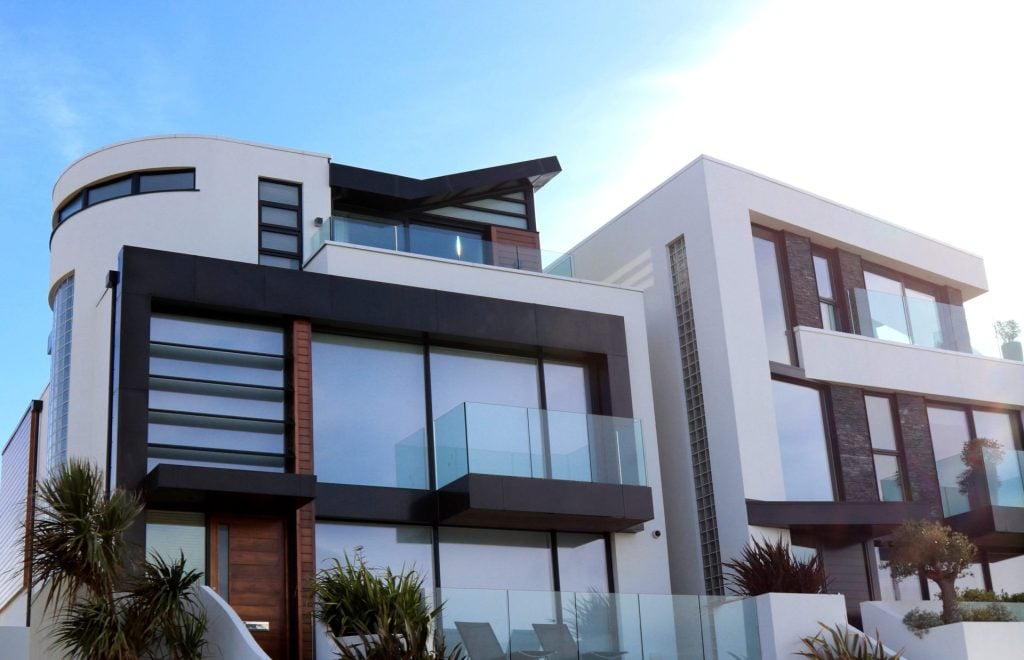One of the most popular tourist attractions in the Philippines is Davao City. Thanks to Davao Airport, the city is conveniently accessible from other Davao tourist destinations and has a good mix of both natural and man-made attractions.
Davao City looking at flights to other key cities in Japan
According to Davao City Councilor, Al Ryan Alejandre, the planned direct Davao to Japan flights and vice versa may open in the following year as the Japanese airline is eager to create the route.
Alejandre stated that as of right now, they are in talks with local airlines about adding flights along the Japan-Davao-Japan route. These might lead from Davao to Japan’s Sennan, Osaka, and to Tokyo.
The prospective link between Davao and Japan has also received support from Japanese businessmen, who believe that it will increase opportunities for trade and education.
Businessmen Jun Shimaoka and Keito Ochi claimed that this would help Japanese citizens since they could travel to Davao to study English and enroll in nursing programs. They made this claim during their privilege speech to the Davao municipal council.
According to a prior source, Sebastian “Baste” Duterte, the mayor of Davao City, already had preliminary discussions on the prospect of starting direct flights with All Nippon Airways (ANA) in Japan last month. However, nothing has been confirmed as of yet.

Davao Airport in Mindanao
The majority of foreign travelers arriving in the Philippines by air travel do so via airplanes landing in Manila at Luzon‘s Ninoy Aquino International Airport (NAIA) or Manila Airport. Travelers have access to entrance sites throughout the Philippine archipelago in addition to flights to Manila.
The Mactan-Cebu International Airport is in the island province of Cebu in the Visayas, a group of islands in the center of the Philippines. The Francisco Bangoy International Airport, also known as the Davao International Airport, is in Davao in the southern region of Mindanao, with the IATA code DVO.
You don’t always have to go through Manila to reach some of the top tourist destinations in the Philippines because to the availability of multiple points of entry throughout the nation. Another option is to take a flight to Davao.
After NAIA and Mactan-Cebu International Airport, Davao International Airport is the third busiest airport in the Philippines and the busiest in Mindanao. Along with an estimated 84,600 metric tons of cargo each year, it receives around 2 million passengers annually. Its Malay-inspired design gives it a distinctively indigenous look, while the airport’s single, precise 3,000-meter runway complies with all applicable international aviation requirements.
The airport features three main lounges, two of which are for passengers flying domestically and one of which is for those flying internationally, as well as check-in desks that are outfitted with electronic weighing scales, conveyors, and a computerized baggage handling system. It also includes a sizable designated area with 800 parking spaces and four spaces for shuttle buses, making it more than capable of managing and handling international flights quickly and effectively.
Airlines and Destinations
The third-largest airline hub in the nation, Davao’s Francisco Bangoy International Airport served flights from Davao by 7 commercial airlines and 1 charter airline, and it has 13 domestic and 2 international destinations.
You can reach Davao from major cities or towns in Luzon or Visayas which include a Manila to Davao flight if you’re coming from Manila, a Cebu to Davao flight if you’re coming from Cebu, a Zamboanga to Davao flight if you’re coming from Zamboanga, a Bacolod to Davao flight if you’re coming from Bacolod, a Bohol to Davao flight if you’re coming from Bohol, and a Cagayan to Davao flight if you’re coming from Cagayan.

Several domestic commercial airlines use this airport, including Philippine Airlines, Cebu Pacific, Air Asia, and Skyjet for chartered flights to fly from.
The Francisco Bangoy foreign Airport has connections flights from Davao to two nearby international destinations: Singapore via SilkAir and Cebu Pacific flights, and Kuala Lumpur via the international airline AirAsia.
Flights to Davao City
Everything is centered in Davao (DVO), the metropolis of the south, whether it be a business venture or a culinary expedition. The bigger cities are frequently simpler to access for wealthy travelers. There are various low-cost options for flights from Manila to Davao.
To find the competitive and the lowest and the cheapest flights to Davao (DVO), visit Skyscanner, a well-known website to find the best and cheapest round trip flight tickets. Daily updates are common for the promo flight deals offers to Davao.
Airlines that fly to Davao
You can take a flight from Manila Ninoy Aquino International Airport to Francisco Bangoy International Airport, or from Manila MNL to Davao City DVO (MNL DVO).
When flying from Manila to Davao, you can choose from a variety of airline alternatives. The most well-known airlines that frequently fly to Davao (DVO) are Philippine Airlines, Singapore Airlines, Cebu Pacific, and Philippines AirAsia.
You don’t need to bother about choosing an airport to fly into because Francisco Bangoy International Airport is the only point of entry to Davao City.
The most popular airports for Davao flights from Manila are Lapu-Lapu and Singapore. Furthermore, a two-hour flight from Manila to Davao is what you can expect. Expect to travel for 1 hour and 55 minutes if you’re leaving from Lapu-Lapu. It is 3 hours and 43 minutes away from Singapore.

What Day is Best to Check Flight?
To save a little money, one of the most common pieces of “quasi-advice” for travelers is to book your flight on a specific day. But the common misconception that the day of the week affects airline prices might just be a myth right now.
There is no ideal day to book a flight, but there are several excellent resources for locating the lowest rates. There is no evidence to support the numerous assertions that Tuesday or Wednesday mornings are the ideal times to book flights, so don’t limit yourself to those days or times since low-cost flights are always available.
When should domestic flights be booked? Plan to book your domestic flights between one and four months prior to the date you intend to depart. The risk of overspending exists if you book too far in advance because, on average, airlines release their schedules and higher-than-expected ticket prices around a year in advance. Booking too close to your departure date puts you at risk of paying significantly more because airlines try to charge extra for last-minute travelers.
Let’s fly to Davao!
One of the tourist spots in the world that will convince you that it is more fun in the Philippines is Davao City. Any traveler’s bucket list must include a trip in Davao City because of its vibrant culture, deserted beaches, respect for indigenous cultures, and mouthwatering cuisine. Go to Davao and take in the city’s cultural legacy while it’s nice and sunny, and make sure to. This is a surefire way to succeed.
Find the cheapest flights to the “Crown Jewel of Mindanao,” where your family and friends will never be bored.The numerous excursions in Davao showcase the city’s natural beauty as well as its illustrious heritage. Add Davao to your list of upcoming vacation places and step outside of your comfort zone. You can also research your options for Davao car rentals if you desire a hassle-free journey. And if the city has won your heart and inspired you to remain longer—possibly permanently—this is the ideal time to invest in a luxury condo in Davao.
Suggested Read: The Importance Of Domestic Interest Rates Forecast For 2022
Suggested Read: Loakan Airport: What To Know About Baguio’s Only Airport
Suggested Read: This Summer’s Best International Flight Deals
Suggested Read: Best Time To Fly To Davao City
Suggested Read: Quadrille Luxury House
Electric vehicle chargers are the newest must-have feature for new luxury neighborhoods since the market for electric cars is expanding quickly.
Sales of electric vehicles climbed 81% between 2017 and 2018 as the electric vehicle market expanded. The newest must-have for brand-new luxury projects is an EV charger.
What is an Electric Vehicle?
Electric vehicles are particularly environmentally friendly since they use little to no fossil fuels (petrol or diesel), have fewer moving parts to maintain, and have low operating expenses. While some electric cars (EVs) employed lead acid or nickel metal hydride batteries, lithium ion batteries are now thought to be the industry standard for battery electric vehicles due to their longer lifespan, excellent energy retention, and self discharge rate of only 5% per month. Although attempts have been made to increase the safety of these batteries, there are still issues with them due to the possibility of thermal runaway, which has, for instance, led to fires or explosions in the Tesla model S.
There are two main types of electric vehicles, fully electric and a plug in hybrids:
-
Battery Electric Vehicles (BEV)
Battery-powered electric vehicles have 99.9% fewer moving parts that need to maintain than internal combustion engines.
Your vehicle may be charged overnight at home, giving them enough range for routine commutes. Although regenerative braking or traveling downhill can help reduce this by charging the battery packs, longer or more difficult trips may need charging the fuel cells before you arrive at your destination. An electric vehicle can take anywhere from 30 minutes to more than 12 hours to fully charge. The size of the battery and the EV charging station’s speed are both important factors.

-
Plug in Hybrid Electric Vehicle (PHEV)
Hybrid electric vehicles provide a combination of battery and gasoline (or diesel) power rather than just depending on an electric motor. This is superior for long-distance travel because you can switch to conventional fuels rather than looking for the charging stations to top off the battery if you want to.
Of course, PHEVs share the same drawbacks as combustion engine vehicles, such as the need for greater maintenance, increased engine noise, pollutants, and increased fuel costs. And in addition, PHEVs have smaller battery packs, which results in a shorter range.
The Best Home EV Chargers for 2023
A home charging station should take advantage of and also be taken into account by anyone who currently owns or is considering to purchase an electric vehicle. Despite the fact that you may charge at public charging stations, doing so rapidly becomes tedious due to the needless trip planning, an EV charger that are continually out of service, and an EV charger hat are already in use. With a home EV charger, all of this is avoidable.
Although slower than commercial DC fast chargers, Level 2 home chargers are more than rapid enough to charge your car when you’re at home, which may match with your electric company’s off-peak rates (many of these chargers allow scheduling).
With the exception of the most famous Nema 14 50 from the Tesla, automakers sell their own branded 240-volt Level 2 chargers for the home, but as all EVs use the Common Charging System (CCS), there are less expensive aftermarket options available. While some chargers are best installed in garages, others are made for outdoor use. Many of these charging devices also connect to smartphone apps so you can check on the progress of charging wherever you are. These different chargers are a desirable substitute for the specialized automobile chargers due to their wide range of capabilities.
-
ChargePoint Home Flex
One of the largest Level 2 charging networks in the nation is provided by ChargePoint, and the company also has a handy app that allows you to locate almost all of the accessible chargers (including free DC fast chargers). There is no learning curve for its Home Flex 50-amp smart charger because it operates similarly to its public chargers. It can be hooked into either an existing 240-volt outlet or a 240-volt circuit, which is often the home’s dryer circuit. More options to install in your garage are possible thanks to the 23-foot cable, and the entire charging unit is stylish.
Pros: Long cable and minimalist design, Indoor/outdoor use, and Smart-charging features (including a good app).
Cons: App only allows one account per charger (drawback for two-EV homes), App requires strong Wi-Fi signal in garage, and the most expensive cost.

-
The Grizzl-E Classic
Have an EV but no garage to charge it in? Take advantage of the most powerful Level 2 charger designed to survive the elements is called the Grizzl-E. It includes an integrated GFCI and is water- and fire-resistant. A 40-amp charger called the Grizzl-E can be hardwired or plugged into a 240-volt outlet already in place. It is as straightforward as they come, yet it is a reliable EV charger.
Pros: Weather-resistant, Adjustable output, and Can operate in extreme temperatures.
Cons: No smart-charging app to monitor status, No power switch—must disconnect cable or flip breaker to turn off, and No owners’ manual.
-
Autel MaxiCharger Home Smart EV Charger
The Autel MaxiCharger is an attractive, weather- and climate-resistant indoor/outdoor EV charger that can be installed quickly, either hardwired or plugged into a 240-volt outlet. It connects to an app via Bluetooth, Ethernet, or Wi-Fi so that you can manage and monitor your vehicle’s charging, including scheduling charging for off-peak times with your utility. An optional RFID card reader can stop unauthorized use if the charger is mounted outside and includes over-the-air software updates.
Pros: Sleek appearance, Weather-resistant, and Easy to install.
Cons: Charging data is strictly via app, Some reports of random disconnects from Wi-Fi and Bluetooth, and Cord for 240-volt operation is stiff.
-
ClipperCreek Level 2 EV Charger
One of the oldest brands in the still-young field of home EV chargers is ClipperCreek. Additionally, Clipper Creek is sticking to the fundamentals while competitors emphasize “smart” chargers that include apps for smartphones. The ClipperCreek Level 2 EV Charger won’t elicit “oohs” and “aahs” from your neighbors about the new expensive device in your garage. The structure is the same as that of earlier ClipperCreek chargers: a base unit with four LEDs (power, charging, power fault, and charging fault) that you plug in to your car to start and unplug to finish. It comes with a three-year warranty and is approved for indoor and outdoor use. You’re paying for the quality here, so “no frills” does not necessarily equate to “low cost.”
Pros: Can operate in extreme temperatures, Rugged construction, and Three-year warranty.
Cons: Expensive, No smart-charging capabilities, Short, rigid power cord limits installation options.

-
Emporia EV Charger
Even though Tesla was one of the first businesses to provide battery backup systems that could be used in conjunction with its wall charger, it is no longer the only one. Colorado-based Emporia includes an energy-monitoring system that detects the individual draw on each of your home’s circuits and a 48-amp Level 2 charger that can be connected to the firm’s 8.2 kWh battery backup. It is possible to install up to six batteries and connect them all to a solar array. You might therefore charge your EV outside the grid. Although there are fewer onboard smart features as the Autel MaxiCharger.
Pros: Good value, Integration for battery backup and energy monitors, and Up to 48 amps and 11.5 kW output; hardwired or plug.
Cons: Battery backup feature requires purchasing Emporia-only system, Fewer tech features (such as Alexa compatibility) than other smart chargers, and Data connection to vehicle may not report charging status for every EV.
Suggested Read: Philippine Electric Vehicle Law Ultimate Guide
Suggested Read: Portable Power Station: Best Of 2023
Suggested Read: How To Prepare For House Guests
Suggested Read: 5 Best Laptops For Your Digital Art
Suggested Read: How Real Estate Taxes Work
“Homeowners, architects, and design enthusiasts alike have taken notice of glass houses.”
Glass houses are a trend in luxury real estate that has caught the attention of both landlords and people who like architecture. These modern wonders have become a sign of elegance and sophistication in a short time. With their clear walls and clean lines, glass houses push the limits of modern living areas and offer a blend of nature and modernity that can’t be found anywhere else.
In this article, we will figure out what makes glass houses so appealing, including why they are so popular and how they enchant people who want to live in the height of luxury.
Why is the Glass House so famous?
Glass promotes the seamless integration of indoor and outdoor spaces, creating a sense of openness and expansiveness. With large windows, glass doors, or even entire glass walls, natural light floods the interior, making the space feel brighter, more inviting, and connected to the surrounding environment. This not only enhances the aesthetic appeal but also has a positive impact on the occupants’ well-being by improving mood, productivity, and overall comfort.
Glass house design allows for breathtaking views and a closer connection to nature. By strategically incorporating expansive windows or glass features, like floor-to-ceiling windows, homeowners can enjoy panoramic vistas, whether a picturesque landscape, a bustling cityscape, or a beautiful garden. This integration with nature fosters a sense of tranquility and brings a refreshing ambiance into the living space.
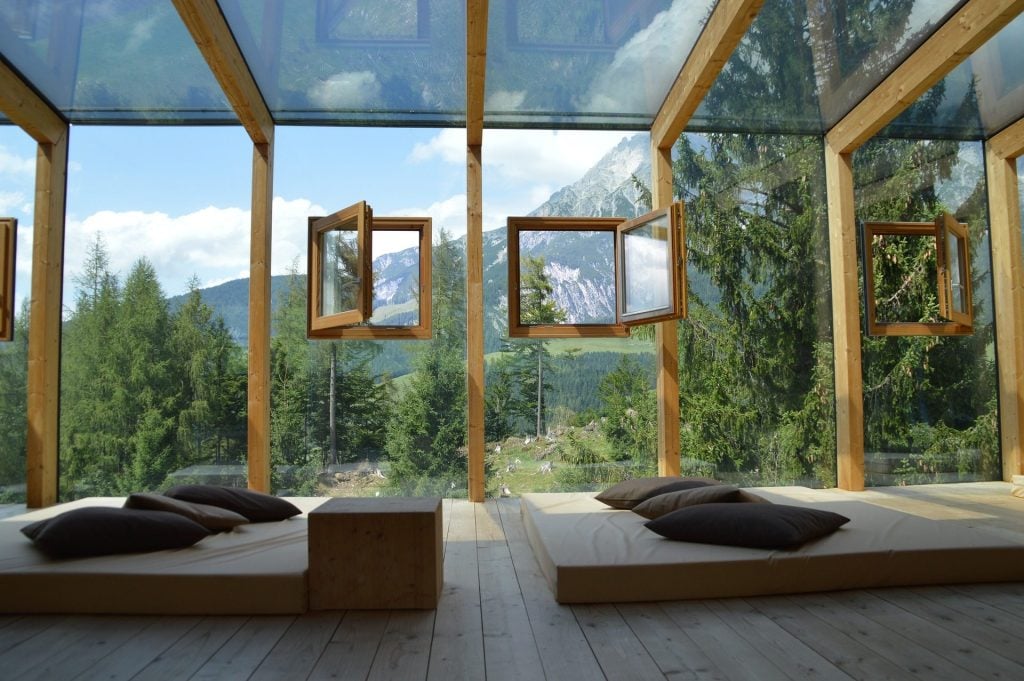
Furthermore, glass contributes to a modern and contemporary aesthetic that is highly sought after in interior design. Its sleek and minimalist appearance creates an air of sophistication and elegance, allowing for versatile and timeless design possibilities. It can be utilized in various forms, such as glass staircases, glass partitions, glass balustrades, or even glass flooring, adding a touch of modernity and visual interest to the overall design scheme.
Glass also enables the illusion of space in smaller or more confined areas. By incorporating glass elements, rooms can appear more spacious and open, creating an airy and expansive feel. This is particularly advantageous in urban environments where space is often limited, as glass helps to maximize natural light and create the perception of a larger living area.
Moreover, the advancements in glass technology have led to improved energy efficiency and insulation properties like low-emissivity (Low-E) glass, which helps regulate indoor temperatures by reducing heat transfer, thereby reducing energy consumption and utility costs. Additionally, sound-insulating glass can minimize noise pollution, contributing to a quieter and more serene home environment.
The growing focus on sustainability and eco-conscious living has propelled the use of glass in home design. Glass is a recyclable material and can be incorporated into eco-friendly building practices. Its transparency allows for optimal utilization of natural light, reducing the need for artificial lighting during the day and decreasing energy consumption. As sustainability becomes a more significant consideration in design choices, glass offers a viable solution for those seeking environmentally friendly homes.
The Advantages of Glass in Home or Building Construction
Glass houses are appealing because they can blend indoor and outdoor areas in a way that isn’t possible with other types of homes. This gives the people who live in them a unique connection to nature.
As the sun dances through the clear walls, it fills the rooms with natural light and creates a relaxing and energizing atmosphere. The uninterrupted panoramic views frame beautiful landscapes and cityscapes like works of art, creating an immersive experience beyond standard homes’ limits.
There are countless ways in which glass may improve our lives, as well as its ability to insulate us from the cold, shield us from the sun’s glare, muffle outside noise, and increase our sense of safety and security. It may also help achieve crucial economic and environmental targets.
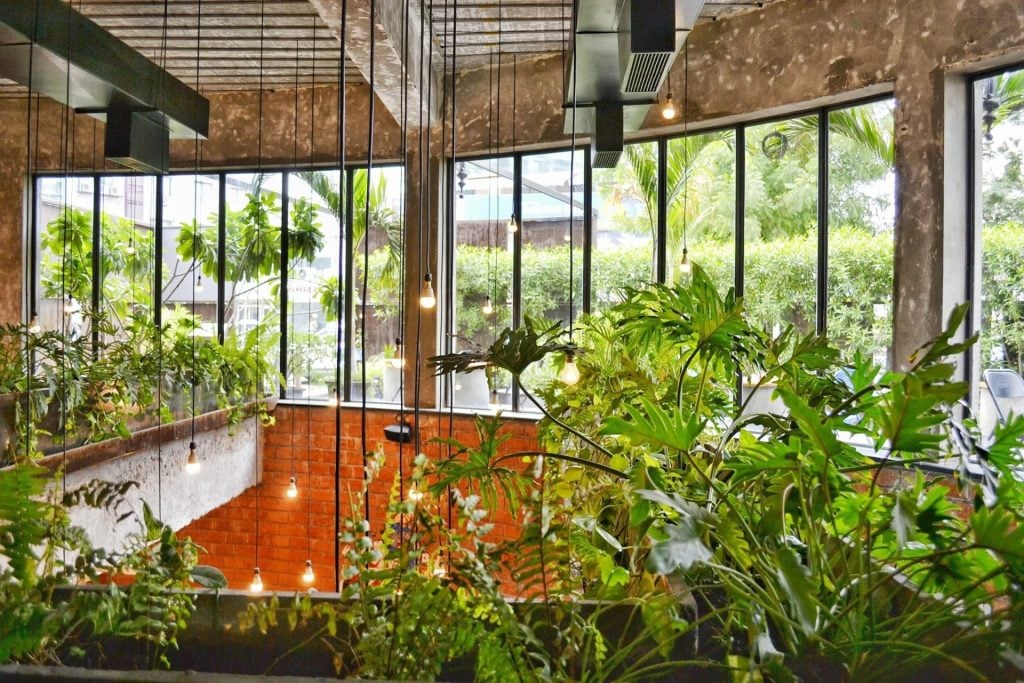
Glass House Appeal #1: Heat insulation
Glass improves building performance without blocking light. Changing temperatures throughout the day, seasons, and climates make indoor comfort difficult. Thermal insulating glass lets light in and reflects heat back in, reducing the impact of frigid outside temperatures.
Double- or triple-glazed windows save energy. This makes a living or working more pleasant year-round and reduces cold spots, drafts, and dampness. You can choose from brilliantly translucent glass, allowing you to use larger windows to flood homes and offices with natural light. All boosting mood and productivity.
Glass House Appeal #2: Solar shield
Solar control glass lets in lots of light but reflects much of the sun’s heat. It reduces the summer “greenhouse effect” when rooms overheat and become uncomfortable. Solar control glass lets light in and reduces sun glare.
Solar control glass lets you construct with light in many colors and can be paired with laminated glass for safety and security.
Glass House Appeal #3: Reducing Noise
As cities grow and evolve, noise pollution may become a significant issue inside structures. Disrupted sleep, elevated stress, and an inability to focus at work are some of the negative effects of excessive noise on a person’s health and well-being. Eliminating unwanted noise makes homes and offices more livable and productive.
Glass House Appeal #4: Resistance to the elements and rusting
In contrast to any other material, glass can withstand the effects of water, wind, sun, and other environmental effects without suffering any degradation in its look or structural integrity.
Glass House Appeal #5: Enhances the building’s aesthetic value
Adding glass to a structure improves its aesthetic appeal and sophistication. Its glossy, smooth surface is perfect for displaying products in retail establishments.
The Disadvantages of Glass in Home or Building Construction
While glass in home or building construction offers numerous advantages, such as abundant natural light and a modern aesthetic, it also presents disadvantages, including higher energy costs, privacy concerns, and increased vulnerability to breakage or damage. Others are the following:
1. A glass is not suitable for a region prone to earthquakes.
2. The transparent nature of glass raises the security price for a building.
3. As a result of being formed of a very stiff and easily breakable material, glass shatters under force without requiring bending or fracturing.
4. Glass shards are extremely sharp and can cause serious injury.
5. Glass allows heat to pass through it; thus, it’s important to find a way to keep the heat in despite its low R-value.
6. In warm areas, glass is not a good choice because of its greenhouse effect.
7. Glare is a significant issue when designing a glass façade.
Cleaning Glass The Easy Way
Cleaning the windows in your home can be boring and repetitious, but it’s not as bad as other duties like scrubbing the toilet. All that careful spraying and wiping just to end up with a mess of streaks elevates the chore to a whole new level of irritation. To rub salt in the wound, they tend to show up only when the lights are just right, usually after the guests leave.
Thankfully, that isn’t how things have to be! As with many other housekeeping tasks, the right equipment makes all the difference when it comes to maintaining glass surfaces like windows, mirrors, and even coffee tables.
-
Go Distilled
Despite appearances, tap water quality can vary greatly. If you’re cleaning counters or floors, this doesn’t matter, but glass displays every flaw, so any contaminants will be obvious. Many individuals dilute glass cleaner with water, which can affect how well- cleaned glass surfaces seem. Hard water contains more dissolved minerals like magnesium and calcium, which will make your cleaner streaky.
-
Use Vinegar
Most pantries have vinegar, an essential component. It’s fantastic on salads and mirrors, and it’s cheap! All-natural appeals to green cleaners. Distilled white vinegar cleans finest. Non-toxic, antibacterial, and acidic, it’s safe for skin, pets, children, and all living things.
-
Minimize Suds
If you want to make a nice foam, soap is king. But if you don’t use suds right, they will leave ugly streaks on glass surfaces. If the job really needs a good clean, don’t put as much soap in the solution as you normally would.
-
Wipe with a microfiber cloth.
Take a clean microfiber cloth and wipe the glass in a circular or zigzag motion. Work systematically, starting from the top and working your way down. Apply gentle pressure to remove smudges, fingerprints, and grime.
After wiping the whole surface of the glass, you should inspect it for any residue or streaks that may have been left behind. If streaks are still visible after wiping the glass surface with a clean, dry microfiber towel, softly spritz the surface of the glass with water and repeat the wiping process.
What are the Benefits of a Glass House?
In modern buildings, glass houses have caught the attention of homeowners, architects, and people who love design. These architectural wonders, which have a lot of glass walls, have gotten a lot of attention for their ability to blend indoor and outdoor areas uniquely.
One of the foremost benefits of a glass house lies in its remarkable ability to invite abundant natural light into the living spaces. The transparency of the glass walls allows sunlight to flood the interior, creating an uplifting and rejuvenating ambiance. The play of light and shadows throughout the day adds a dynamic and ever-changing element to the living environment, enhancing the overall aesthetic appeal.
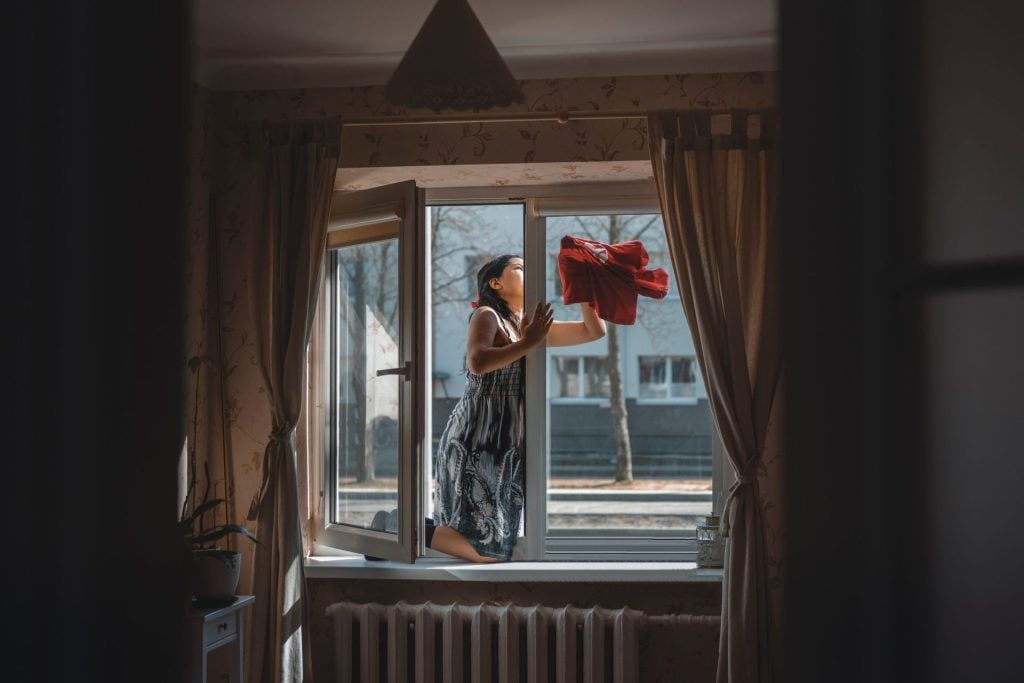
Beyond its radiant illumination, a glass house fosters a seamless integration with the surrounding natural environment. The transparent walls provide unobstructed panoramic views, offering an immersive experience where nature becomes an integral part of the interior design. Whether it’s lush green landscapes, cascading water features, or breathtaking city skylines, the glass house allows residents to connect with the beauty of their surroundings on a deeper level.
And speaking of living in beautiful surroundings, don’t you know you can find it in Forresta Villar Land? It is in the southern part of the city and is the site of a new mixed-use development influenced by nature.
Forresta, located in Villar City, Alabang, is a 118-hectare mixed-use development that features modern residences and hubs in tranquil, natural settings.
The eco-conscious mindset that permeates modern living has also propelled the popularity of glass houses. These architectural wonders embrace sustainability by harnessing the power of natural light and reducing the need for artificial lighting during the day. Their energy-efficient design and eco-friendly materials align with the growing desire to reduce carbon footprints and create a more harmonious relationship between humans and the environment.
In conclusion, the appeal of glass houses in luxury real estate transcends their striking aesthetics. They embody a harmonious blend of modern design, immersive natural surroundings, and sustainable living. With their ability to redefine traditional boundaries and provide a unique sensory experience, glass houses have captured discerning homeowners’ imaginations and continue to be sought-after symbols of luxury, elegance, and harmonious coexistence with nature.
Suggested Read: Sustainability In Glass Houses: Reducing Energy Costs In The Summer
Suggested Read: Pros And Cons Of Glass Houses For Summer Living
Suggested Read: Is Modern Glass House Design Worth Investing In
Suggested Read: Glass House Designs To Take Inspiration From
Suggested Read: Vertical Garden And Its Benefits
Smart home technology simplifies life.
It provides intuitive control over our home’s systems and appliances to simplify daily duties. We can control lighting, temperature, entertainment, and appliances with a few clicks on a smartphone or a voice command to a smart assistant.
We can spend more time on vital things by automating and remotely controlling these operations. Smart home technology prioritizes comfort and customization.
Living environments are personal. We can control lighting, temperature, playlists, and household routines of our smart homes. Smart home technologies let us customize our houses to match our moods and needs.
A smart home technology improves our comfort and well-being by customizing our homes. Glass houses are one of a kind structures because of the special way they make use of daylight, transparency, and proximity to nature. To make these buildings really sustainable, eco-friendly and energy-saving features must be incorporated into the design.
From maximizing passive design components to incorporating cutting-edge technologies and sustainable materials, this article delves into the myriad approaches that may be taken to build glass homes that are both energy-efficient and kind on the environment.
Smart Home And Glass House: Monitoring And Operating Homes
Smart home techonology lets homeowners monitor and operate their homes remotely. Homeowners can remotely inspect security cameras, manage equipment, receive notifications, and alter settings via mobile apps or web portals. Monitor and manage their homes from work, vacation, or errands gives homeowners more control, flexibility, and peace of mind.

Sustainable Building Methods
Reduced energy needs and increased environmental sustainability are made possible through the implementation of passive design principles in smart glass buildings.
In addition, these methods make the most of naturally occurring phenomena like daylight and air flow to reduce reliance on artificial sources of illumination, temperature regulation, and comfort.
Smart Home, Glass House, And Sustainable Building Methods: Shading
Shading can prevent heat gain in the summer and maximize sunlight gain in the winter. Overhangs, louvers, or external blinds placed in strategic locations can block the sun’s rays and keep rooms at a pleasant temperature.
Smart Home, Glass House, And Sustainable Building Methods: Insulation
Insulation helps maintain comfortable indoor temperatures and limits unwanted heat transfer.
Reduce heat loss by sealing drafts and using high-performance insulation like recycled cellulose or spray foam insulation in your walls, ceilings, and floors. Natural ventilation is the use of fresh air to cool a building without using mechanical cooling systems.
Smart Home, Glass House, And Sustainable Building Methods: Cross-Ventilation
Cross-ventilation can be encouraged and hot air released during hot seasons by installing windows, roof vents, or skylights that can be opened. Concrete and stone are examples of thermal mass components that can be incorporated to assist stabilize indoor temperatures.
These elements serve as heat sinks, making for a more comfortable and cost-effective indoor climate.
Superior Windows & Glazing Systems
The energy efficiency of a glass home is drastically affected by the glass used and the window systems used. Glass homes can be made more energy efficient by paying attention to different things.
Glass Coating
Glass coated with a low-emissivity (Low-E) coating reduces the transfer of heat while still letting in visible light. This decreases both summer heat gain and winter heat loss.
Insulated glass units (IGUs) with gas fills between the layers boost thermal performance and sound insulation, and can be double or triple paned. These devices create a thermal barrier, reducing heat loss and increasing efficiency.
State-of-the-art technologies like electrochromic or thermochromic glazing can automatically change the solar heat gain and window transparency in response to environmental factors. This provides for the most efficient use of daylight and air conditioning.
Selecting window frames made from recyclable materials like aluminum, wood, or composites that have strong thermal performance can reduce heat loss and increase savings on utility bills.

Lighting and Home Appliances That Save Energ
A glass house’s overall energy usage is strongly impacted by its efficient lighting and appliances. Here are some of the things that can be used to improve energy efficiency.
LED lighting throughout the glass house cuts down on energy use and has a longer lifespan than incandescent bulbs. Dimmers, motion detectors, and other forms of automatic light management can further reduce energy consumption.
When shopping for new appliances, look for the Energy Star label to know that they meet stringent efficiency requirements. Energy-efficient products like refrigerators, air conditioners, and heaters cut down on utility costs and carbon emissions.
Automatic management and optimization of lighting is made possible by smart lighting controls, which include occupancy sensors and planned programming, resulting in reduced energy use.
Combining Renewable Energy Sources
Smart glass houses can be made sustainable and self-sufficient through the use of renewable energy sources.
Electricity can be generated from the sun by installing solar panels on the roof or by utilizing clear photovoltaic glass. The use of fossil fuels for power generation can be decreased by storing excess energy in batteries or returning it to the grid.
Geothermal systems, which use ground-source heat pumps to heat and cool using the constant temperatures found underground. These technologies harness the Earth’s natural energy to provide climate management that is both effective and gentle on the planet.
Depending on site conditions, wind turbines can be built within the structure of the glass house to produce renewable energy. This is especially important for glass houses that are exposed to strong winds.
Sustainable Materials and Construction Techniques
The environmental impact of glass house construction can be minimized by the use of sustainable materials and eco-friendly building practices.
Recycled materials can be used for almost any building part, as well as insulation, flooring, and decorative touches, reducing waste and saving energy and money. The design may make use of recycled materials such as salvaged wood, glass, or metal.
In order to maximize energy efficiency and thermal comfort, it is recommended to use high-performance insulation materials with minimal embodied energy, such as cellulose or recycled fiberglass. In order to conserve water, it is important to install water-saving devices such as low-flow commodes, faucets, and showerheads, as well as rainwater harvesting systems for use in landscaping and gardening.
Green roofs and vertical gardens are a great way to boost insulation, lessen the impact of heat islands, and promote air quality.
These plant communities are important because they insulate the building naturally, increase biodiversity, and improve the visual appeal.
By incorporating passive design strategies, high-performance glazing, energy-efficient lighting and appliances, renewable energy integration, sustainable materials, and construction techniques, glass houses can be transformed into energy-efficient and environmentally friendly living spaces.
The transparent nature of glass houses allows for a strong connection with the outdoors while maintaining a comfortable and sustainable indoor environment.
Embracing these principles not only reduces energy consumption and environmental impact but also creates healthier and more enjoyable living environments for occupants.
In the metropolitan south, there is now the development of a project that will perfectly integrate nature, architecture, and cutting-edge technology.
This project will offer contemporary residences and modern hubs in calm, natural settings.
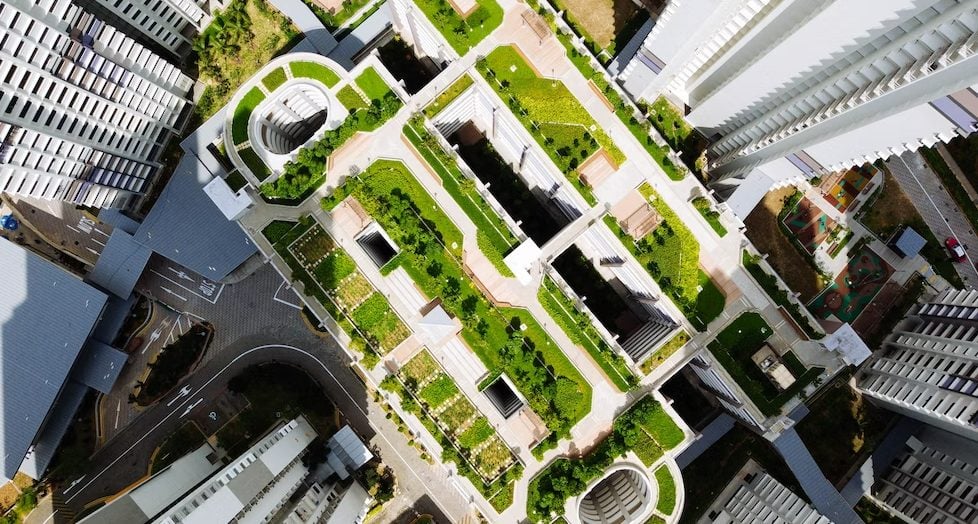
Discover Forresta in Villar City
The said community a 118-hectare mixed-use estate in Villar City in Alabang that is slated to become a beautiful “city in the forest” where premium grade upscale residential condominiums, ultra-exclusive residential lots and high-rise office towers, are merged and cradled in nature.
Billed to become a luxurious “city in the forest.”
The nature-inspired community will be the first of the four major estates that will develop within Villar Land, which encompasses around 2,500 hectares of prime raw land in the active area of Daang Hari.
It will also be the most conspicuous of the estates to rise within Villar Land.
What are you waiting for? Build a smart home now in Forresta.
Your home can be customized to different things that will fit your preferred smart home, such as having switchable glass. Keep in mind that there are many benefits of smart home, especially when it comes to security and safety of your family. Technology today is very advanced, and we must make the most out of it.
High tech equipment is on demand, especially for privacy. Nowadays, to control a home is an advantage.
Forresta is where nature and technology meets. In Forresta, the technology is unmatched, and is becoming more advanced.
Suggested Read: Sustainability In Glass Houses: Reducing Energy Costs In The Summer
Suggested Read: Sustainable Design That Won’t Ruin Your Home’s Charm
Suggested Read: Insulation Guide For Energy-Efficient Luxury Homes
Suggested Read: Cooling Amenities Inside Your Luxury Home
Suggested Read: Smart Features For Your Luxury Home
Spanish inspired architecture has been popular for centuries and has experienced several periods of heightened interest and influence throughout history.
Islamic architecture was a major influence on Spanish style during the eight centuries that Muslims ruled Spain.
The incorporation of geometric motifs, arches, and ornamental tilework are all influenced by this style.
There are many examples of classical Roman architecture in Spain due to the empire’s long and influential rule there. Columns, arches, and symmetrical layouts are all indicative of this.
During the Middle Ages, Gothic architecture had a major impact on Spanish style.
The use of slender, pointed arches, ribbed vaults, and ornate stonework are all telltale signs of this influence at work.
During the 16th century, Renaissance ideals of symmetry, proportion, and classical order had a profound effect on Spanish architecture.
Columns, pilasters, and pediments are all examples of this.
Baroque architecture, with its emphasis on ostentatious adornment and dramatic lighting, originated in 17th-century Spain.
The utilization of big stairs and opulent fountains are all indicative of this.
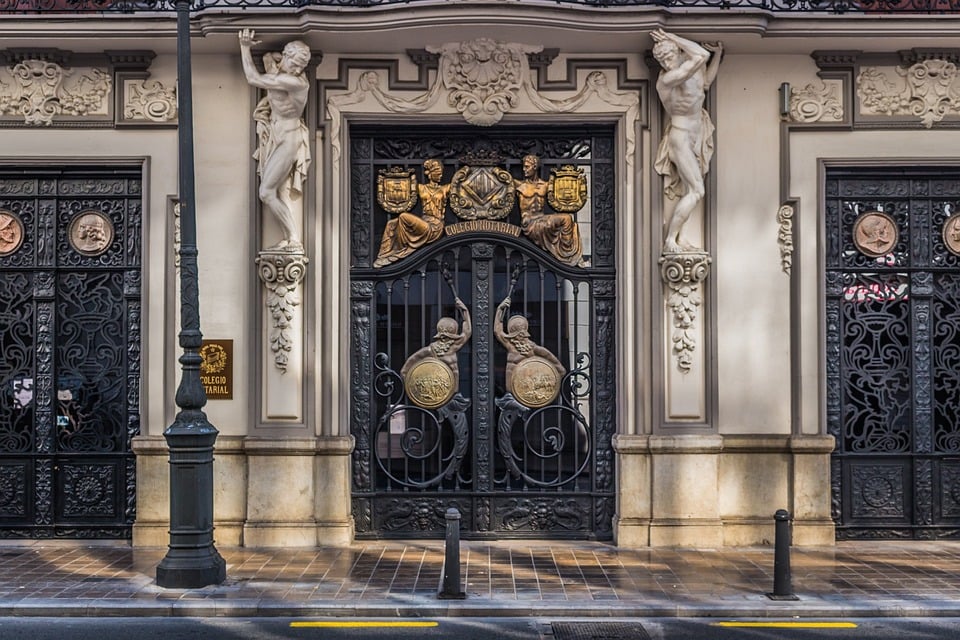
As a whole, Spanish architecture is distinguished by a synthesis of styles that reflect the country’s rich and varied past.
Spanish architecture is a unique and interesting blend of styles that has caught the imaginations of builders and designers all over the world, from the exquisite tilework of Islamic architecture to the majesty of Baroque design.
When did the popularity for Spanish architecture begin?
The Islamic period in Spain, which began in the 8th century and lasted until the late 15th century, was one of the earliest periods of prominence for Spanish architecture.
Particularly in the southern region of Andalusia, Islamic architecture had a profound impact on Spanish design during this time.
In the 16th century, when Spain underwent a cultural and artistic renaissance, Spanish architecture had another period of great success.
During this time, many Spanish architects looked to the works of Renaissance greats like Michelangelo and Raphael for inspiration as they returned to a focus on classical order and proportion.
During the 17th century, when the Baroque style first appeared in Spain, the country’s buildings enjoyed widespread acclaim.
Large, elaborate buildings and public spaces were designed during this time period by architects and interior decorators in an effort to amaze and inspire audiences.
To this day, many architects and designers look to Spain’s rich architectural history for inspiration, ensuring the style’s continued relevance and success in the current period.
Here are some of the Factors why Spanish Architecture is prevalent nowadays:
Earthy Tones
Especially in the Mediterranean-style residences that are commonly linked with the Spanish design, earthy tones are a prominent feature.
These hues were chosen to evoke a sense of comfort and warmth, drawing inspiration from the local environment.
Terra cotta, warm yellows, deep oranges, and browns are some of the most popular earthy tones utilized in Spanish architecture.
Tiles in the kitchen and bathroom, as well as the outside walls, can all be found in these tones.
Using natural, earthy tones is a common practice in Spanish architecture since it helps to blend the building in with its surroundings.
This is especially useful in locations with stunning natural scenery, as it draws attention to the area’s best qualities.
Functional
As well as being aesthetically pleasing, earthy tones can also be functional.
Because of this, they can help save money in the long run by reducing the frequency with which they need to be cleaned and maintained.
Homes designed in the Spanish style are also well-known for their high levels of energy efficiency.
The majority of these houses are intended to make the most of natural light and ventilation, which can help cut down on monthly power bills and create a living environment that is better for residents’ health.
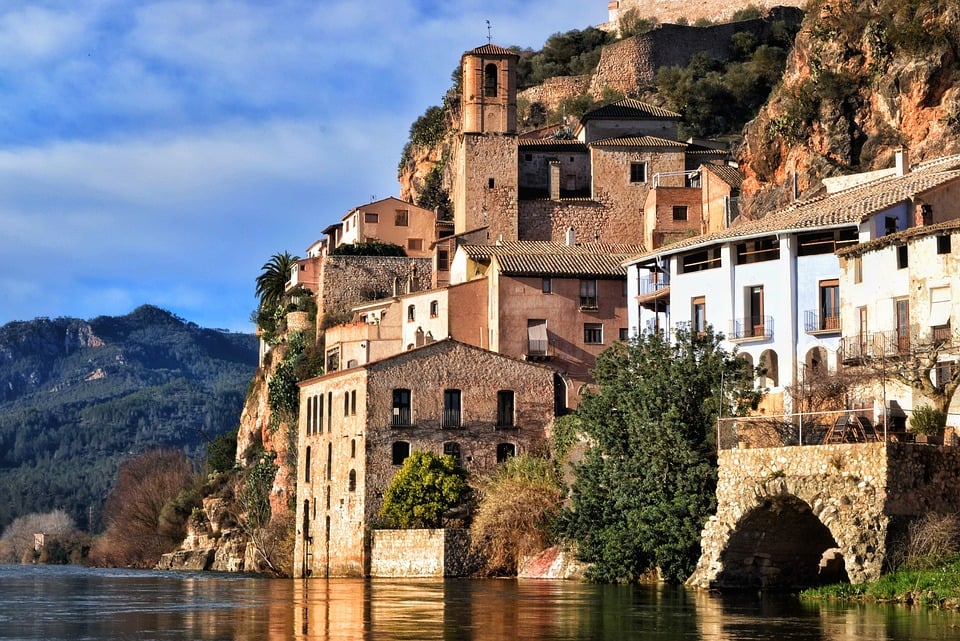
Aesthetic
When it comes to the overall aesthetic appeal of Spanish architecture, earthy tones play a significant role.
Indeed the style architecture by the Spaniards are beautiful and pleasing to the eyes, especially that the Philippines is a tropical country, and was a Spanish colonial before.
The warm and inviting colors of Spanish architecture can help you create a room that is attractive and functional, whether you’re searching for a lavish holiday house or a cozy place to live all year round.
Outdoor Spaces
The use of outdoor spaces for living is another hallmark of Spanish-style building.
The large patios, courtyards, and gardens found in many of these homes are ideal for hosting gatherings and relaxing in the sunshine.
Patios, porches, and other outdoor gathering places play a crucial role in the layout and design of a Spanish-style house.
These areas are made to feel like an extension of the home, allowing residents to enjoy the Mediterranean climate in style and comfort.
In Spanish homes, the patio or terrace is generally shaded by an arbor or pergola, making it a popular place to spend time outside.
These spaces are ideal for hosting gatherings or just spending time with loved ones, as they generally have plush furniture, dining tables, and extras like outdoor kitchens and fireplaces.
The courtyard, a common outdoor living space in Spanish architecture, is usually positioned in the home’s central core and is accessible from several different rooms.
Fountains, garden beds, and lounging places are common components of courtyard designs that aim to create a private and intimate space.
Gardens are an integral component of Spanish outdoor living areas, and are typically planned to be lush and colorful with a wide range of plants and flowers that thrive in the region’s typical Mediterranean environment.
Homeowners have several design options for these gardens, since they can be integrated into existing patios and courtyards or placed in other parts of the property.
Spanish architecture’s outdoor living spaces aim to blur the line between indoors and out, giving cozy, practical spots to take in the region’s famous sunshine and warm breezes.
Many homebuyers specifically seek out properties with Spanish architectural features.
The design’s usefulness is taken into account.
Brittany Sta. Rosa is the perfect example of how Spanish architecture can be adapted for use in tropical climates.
Spanish-style homes are best suited to arid climates, so if that’s where you live, you might want to give some thought to the landscaping of your ideal mansion.
To further safeguard your property from the weather, you can choose to install a sun-resistant exterior.
Spanish-style homes are ideal for warm climates because of their thick walls and cool, easy-to-clean tile floors.
It may take some time, but the right modern luxury home inspired by Spain is out there.
The Brittany Corporation, fortunately, has something special in store for you.
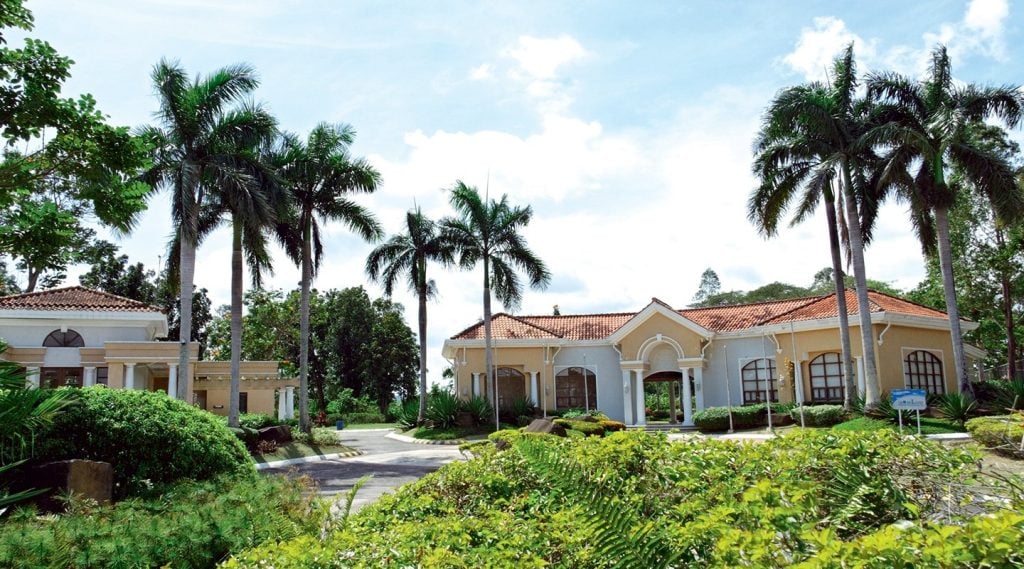
Brittany Sta Rosa is the place to go if you’ve settled on purchasing a home in the Spanish colonial design.
The Belle Reve residence is one of their Laguna luxury house and lot holdings; it is a wonderful example of Spanish design.
Brittany can pick from a wide variety of opportunities in Santa Rosa Laguna.
Within the brittle, lush forests that meld into breathtaking knot gardens, tower the sumptuous mansions, which have been painstakingly built to blend in with the natural environment.
It is the perfect place to get away from the bustle of the city and take a deep breath of relief if you are looking for a simpler, more refined way of life.
A moderate, pleasant, and soft breeze will allow you to unwind in the tranquility of your own home, away from the hustle and bustle of the city and the intrusion of tall, imposing structures and other distractions.
Suggested Read: How To Incorporate Spanish Design Elements Into Your Home
Suggested Read: Traditional Spanish Decor: Tips For Achieving A Classic Look
Suggested Read: Exquisite Craftsmanship Of Spanish Architecture
Suggested Read: Colors Of A Rustic Spanish Style
Suggested Read: Bringing The Colors Of Spain
One of the most popular places locals and foreigners visit is Baguio City, a city in Northern Luzon. It’s dubbed the “Summer Capital of the Philippines due to its cool and crisp weather brought by its high altitude. With its cool climate, lush greenery, and breathtaking views, Baguio City is a must-visit destination for anyone who wants to escape the hustle and bustle of the city.
The Cool Mountain Breeze: Summer in Baguio
Benefits of Experiencing Baguio’s Cool Climate During Summer
Spending your summer in the mountainous city of Baguio offers a lot of benefits. From the relief you get from the hot and humid weather in other parts of the country to opportunities for outdoor activities and to enjoying nature that brings health benefits, it’s no wonder why Baguio is a top tourist destination, especially in the summer.
1) Relief from hot and humid weather in other parts of the country
Baguio is the place to go if you want to stay in a cool place and be refreshed during the summer. This is because the high elevation of Baguio, which is approximately 1,500 meters above sea level, brings in the cool and crisp air, creating a climate akin to a subtropical highland climate. This climate brings in temperatures that remain comfortable and refreshing even during the summer, in contrast to the hot and humid weather in the lowlands.
2) Opportunity to engage in outdoor activities
Tourists in Baguio can take advantage of the cool temperatures by enjoying various outdoor activities, such as picnics by the lake, biking in the mountains, and taking leisurely walks in the many attractive parks of the city. This is because tourists can do these outdoor activities without worrying about sweating a lot and getting dehydrated!
3) Enjoying Nature Which Brings Health Benefits
Aside from the beneficial effects on the physical health of the outdoor activities that can be done in Baguio, enjoying the sights offered by the city’s natural attractions help a person’s mental health. In fact, according to the American Heart Association, going out there in nature and enjoying the fresh mountain air helps reduce stress and anxiety.
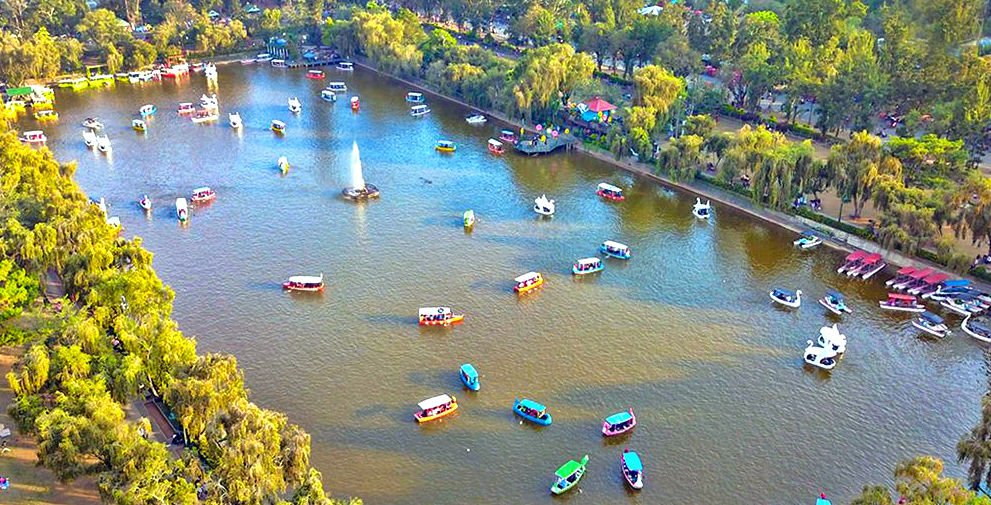
Tips for Traveling to Baguio During Summer
Safety and enjoyment are the top priorities when traveling, so it’s important to consider even the small details, from preparing the appropriate clothing to looking for the best accommodation and transportation options.
Here are some things to keep in mind when traveling to Baguio during the summer:
1) Appropriate Clothing
While we’re supporting the notion that anyone can wear what they want, it’s still important to dress in a way that will make you comfortable in the City of Pines. A light jacket or sweater is a must-have since the nights can be chilly. Comfortable shoes or sandals must also be prepared because exploring Baguio on foot is much more enjoyable.
2) Accommodation Options
Baguio offers a wide range of accommodation options, and it’s best to opt for those near the main attractions and amenities for accessibility. Booking ahead is also a great idea, especially during peak travel times such as the summer, to ensure a hassle-free trip.
3) Transportation Options
Baguio is best explored by foot, although those who prefer to travel by car or other modes of transportation can also do so as a wide range of vehicles is available. Taxis and jeepneys are widely available, and motorcycles and cars may be rented.
Exploring Baguio: Summer Activities
Outdoor Activities in Baguio
1) Hiking
Baguio is one of the country’s top destinations for hiking enthusiasts, as this city is located at the center of lush mountains and rolling hills. Some of the most popular hiking destinations include:
- Mount Ulap
- Mount Pulag
- Mount Santo Tomas
- Mount Kabuyao
2) Trekking
Trekking is also a fun outdoor activity that one can do in Baguio, especially for thrill-seekers and nature lovers. It’s an excellent way to enjoy the scenery of the place while doing a workout. Some of the notable trekking destinations are Kibungan Circuit and Tinongdan Circuit.
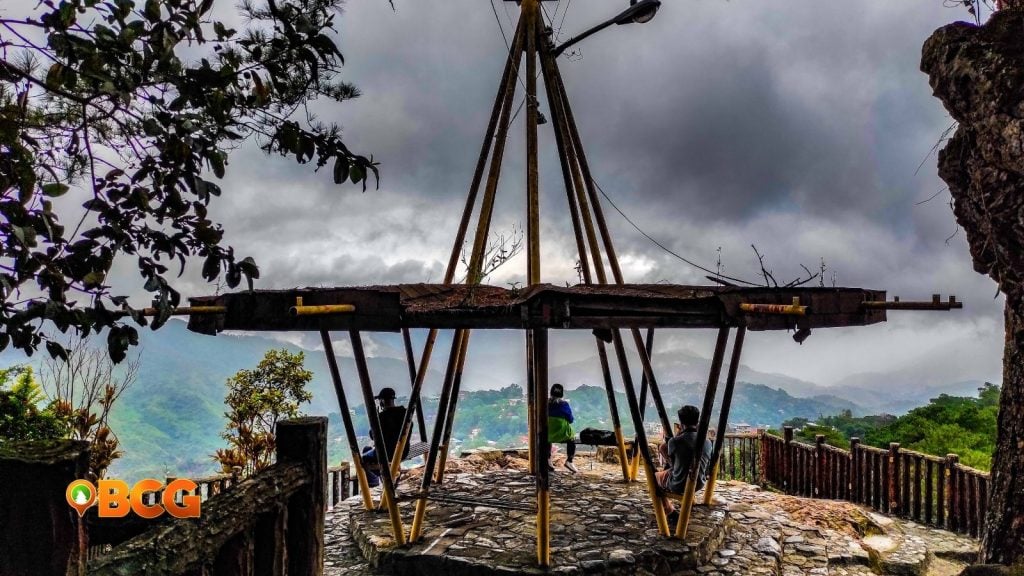
3) Camping
Camping is a great outdoor activity in Baguio, especially because the city offers a wide variety of great camping sites, with the most popular being the Camp John Hay Eco Trail. Other notable camping sites you can also visit include the Valleypoint Camp Site, Baguio Country Club, the Mount Costa Resort, and the Tuba Campsite.
Indoor Activities in Baguio
1) Visiting museums and galleries
Learning more about the region’s rich cultural heritage is possible by visiting the city’s wide range of museums and galleries. The BenCab Museum, for example, houses a collection of works by National Artist Benedicto Cabrera and exhibits on Cordillera art and culture. Other notable museums and galleries include the Baguio Museum, Tam-Awan Village, the Ili-Likha Artist Village, and the Arko ni Apo Art Gallery.
2) Attending Cultural Events
Baguio also boasts of events and festivals that showcase the ingenuity of its locals. It’s home to the world-famous Panagbenga Festival, a month-long celebration taking place in February, which showcases vibrant flowers paraded in colorful and meaningful floats. Other events to witness include the Baguio Arts Festival, and the Cordillera Administrative Region Athletic Association (CARAA) meet.
3) Trying Local Cuisine
One of the best things about Baguio City is the abundance of fresh produce. You can find fresh fruits and vegetables, as well as local delicacies like strawberry taho and ube jam, in the different markets around the city. Trying local dishes is also a great activity if you’re a foodie. Some local dishes worth trying include pinikpikan, a traditional Igorot chicken dish, and dinengdeng, a vegetable stew made with fish.
The Best Places to Experience the Cool Mountain Breeze in Baguio City
1) Burnham Park
Burnham Park is one of the most popular attractions in Baguio City. It’s in the city center and is a great place to relax and enjoy nature. One of the top things to do in Burnham Park is to rent a boat and paddle around the man-made lake. Pine trees surround the lake and offer stunning views of nature. You can also enjoy a picnic or go cycling around the park.
2) The Mansion
The Mansion is the official summer residence of the Philippine President and is said to be the most visited and photographed destination in Baguio. It houses a mini-museum containing the memorabilia collected during the stay of the former presidents. It’s also a good place to enjoy the city’s mountain breeze.
3) Mines View Park
Mines View Park is an excellent place to visit for those who want to learn more about the Igorot heritage and enjoy the breathtaking views of the mountains through its observation deck. Shops selling souvenirs like snacks and trinkets are widely available, and the park’s lower level allows you to take photos in Igorot clothes.
4) Camp John Hay
Camp John Hay is a former American military base that has been turned into a tourist destination. It is located in the heart of Baguio City and is surrounded by pine trees and lush greenery. This hidden gem is a must-visit destination for anyone who wants to relax and unwind.
5) BenCab Museum
The works of National Artist Benedicto Cabrera are housed in the BenCab Museum, a museum located on a hill overlooking the mountains and surrounded by beautiful gardens. Tourists can thus enjoy both art and nature when visiting this place.
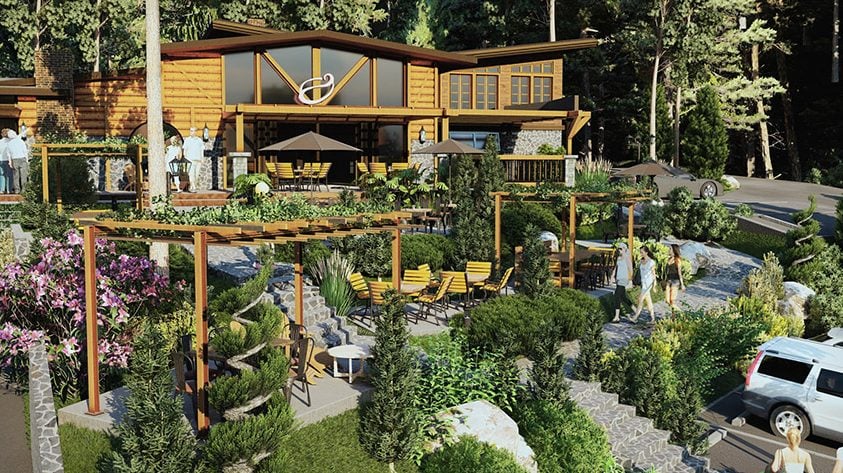
Enjoy the Summers in the City of Pines at Bern Baguio
Bern Baguio, a luxurious condominium in Baguio, is a perfect place to make the most of your stay in the City of Pines. It has a cozy environment, brought by its wide range of amenities, such as a fitness center, swimming pool, and 24-hour security. This thus guarantees that it may be considered your home away from home.
The condominium’s prime location also makes top tourist spots accessible, such as Burnham Park, Mines View Park, and the BenCab Museum. It also houses an on-site restaurant that cooks sumptuous meals that you can enjoy in the outdoor area while enjoying the mountain breeze.
Bern Baguio is perfect for families, couples, and solo travelers looking for a relaxing and refreshing summer getaway. Tourists can have an unforgettable experience in the City of Pines through the luxurious ambiance and prime location of Bern Baguio.
Learn more about what we do by looking at our Frequently Asked Questions, or contact us for your concerns or inquiries. You may also book an appointment with us now to check out our properties.
Suggested Read: Why You Should Move To Boracay In The Philippines
Suggested Read: Living A Balanced Life Of Comfort And Luxury
Suggested Read: Bern Baguio: The Pinnacle Of Luxury Living
Suggested Read: Benefits Of Living In Baguio 2023
Suggested Read: Luxurious Summer Living
Spain has a rich architectural history, and Spanish-style homes have become a popular choice for those seeking a luxury living. These homes are known for their unique design, featuring a blend of different influences, including Moorish, Mediterranean, and Gothic architecture. Spanish-style homes are all about elegance, luxury, and warmth, offering an experience like no other. In this article, we’ll look at Spanish-style architecture, the history of these homes, key features, and Spanish revival-style homes.
What is Spanish-style architecture?
Spanish-style architecture is a style that originated in Spain and was brought to the Americas by Spanish settlers in the 16th century. It is characterized by its use of stucco walls, red clay tile roofs, and wrought iron details. Spanish-style homes are known for their warm and inviting atmosphere, with many featuring beautiful courtyards, fountains, and lush landscaping.
The history of Spanish-style homes
Spanish-style homes have a rich history that dates back to the 16th century when Spanish colonizers first arrived in the Americas. These homes were built using a combination of Spanish and indigenous architectural styles, resulting in a unique blend of old and new.
During the 1920s and 1930s, there was a revival of interest in Spanish-style architecture, which led to the development of the Spanish revival style. This style was characterized by stucco walls, red clay tile roofs, and wrought-iron accents, as well as the inclusion of decorative tiles and ornamental details.
Today, Spanish-style homes continue to be popular among homeowners who appreciate the unique beauty and charm of these homes. Many options are available, whether you’re looking for a historic home or a modern interpretation of the Spanish style.
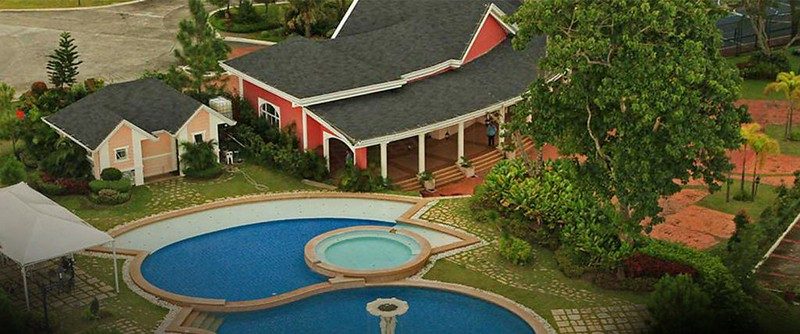
The Future of Spanish-style Architecture
Spanish-style architecture has been popular for hundreds of years and shows no signs of slowing down. As more and more people seek out the warm and inviting atmosphere of Spanish-style homes, we can expect to see this style of architecture continue to thrive.
Spanish revival style homes
Spanish revival style homes are a popular variation of the traditional Spanish-style home. These homes were built during the Spanish revival movement of the early 20th century and featured many of the same elements as conventional Spanish-style homes. However, Spanish revival-style homes also incorporate other architectural styles, such as Art Deco and Mission Revival.
One of the defining features of Spanish revival-style homes is the use of bright, bold colors. These homes often feature vibrant tiles, painted walls, and colorful accents, creating a lively and cheerful atmosphere. Spanish revival-style homes also tend to be larger than traditional ones and feature more elaborate architectural details.
Key features of Spanish-style homes
Several key features are common to Spanish-style homes. These include:
- Stucco walls: Spanish-style homes are typically constructed with stucco, a plaster applied over a wire mesh. Stucco walls are durable, low-maintenance, and provide excellent insulation.
- Red clay tile roofs: Another hallmark of Spanish-style homes is their use of red clay tile roofs. These tiles are durable, long-lasting, and provide excellent insulation.
- Wrought iron details: Spanish-style homes often feature wrought iron details, such as balconies, gates, and railings. These details add a touch of elegance and sophistication to the home.
- Courtyards: Many Spanish-style homes feature beautiful squares, which provide a private outdoor space for entertaining and relaxati
- Arches: Arched doorways and windows are another common feature of Spanish-style homes. These arches add a sense of grandeur and elegance to the home.
Luxury living in Spanish-style homes
Spanish-style homes are known for their luxurious amenities and features. Many homes feature large, open living spaces with high ceilings, which create a sense of grandeur and elegance. Some homes also feature wine cellars, home theaters, and other high-end amenities.
In addition, Spanish-style homes often have beautiful outdoor living spaces, such as courtyards, patios, and balconies. These spaces are perfect for entertaining guests or enjoying a quiet evening with family.
The benefits of living in a Spanish-style home
There are many benefits to living in a Spanish-style home. First and foremost, these homes are beautiful and elegant, with a timeless style that never goes out of fashion. In addition, Spanish-style dwellings are often built with high-quality materials and construction techniques, which means they are durable and long-lasting.
Another benefit of living in a Spanish-style home is the sense of community that often comes with it. Many Spanish-style homes are in close-knit neighborhoods where neighbors know and look out for each other.
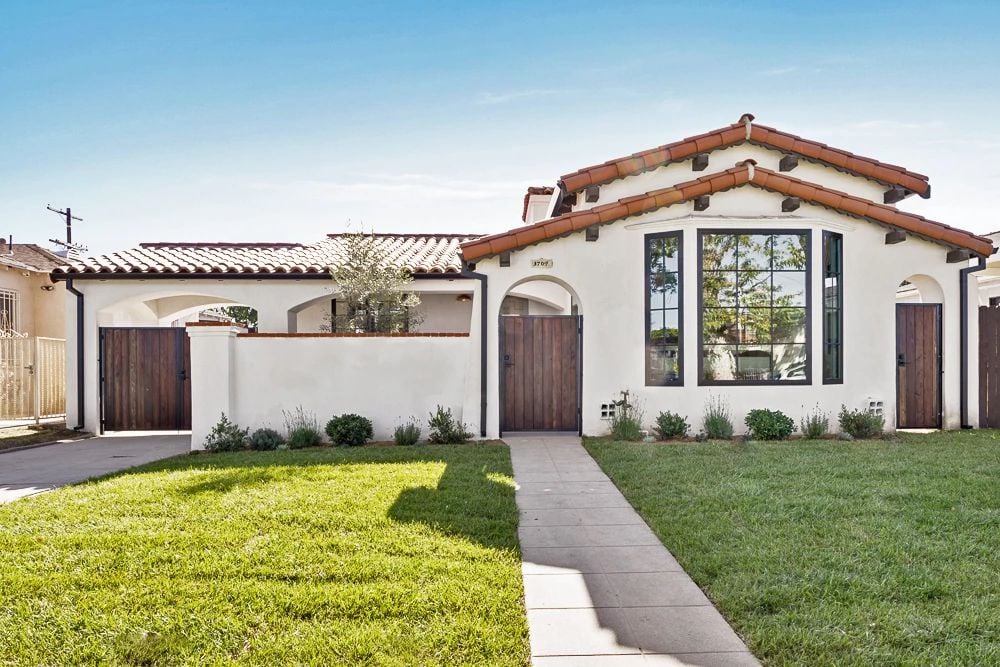
Interior design ideas for Spanish-inspired homes
When it comes to interior design for Spanish-style homes, the key is to create a warm and inviting atmosphere that complements the home’s architecture. Some ideas to consider include:
- Using warm, earthy colors: Spanish-style homes often feature warm, earthy colors such as terracotta, ochre, and rust. These colors create a cozy and inviting atmosphere.
- Incorporating tile accents: Spanish-style homes often feature tile accents in the kitchen, bathroom, and other areas. Consider using colorful and intricate tiles to create a beautiful focal point.
- Using wrought iron details: Wrought iron details such as light fixtures, curtain rods, and furniture can add a touch of elegance and sophistication to the home.
- Adding natural materials: Spanish-style homes often incorporate natural materials such as wood, stone, and clay. Consider using these materials in your furniture and decor to create a cohesive look.
Landscaping and outdoor living spaces in Spanish-style homes
One of the most beautiful aspects of Spanish-style homes is their landscaping and outdoor living spaces. Some ideas to consider include:
- Creating a beautiful courtyard: Many Spanish-style homes feature courtyards with fountains, planters, and seating areas. Consider making a similar space in your own home.
- Adding a covered patio: A covered patio is a great way to extend your living space and create a comfortable outdoor area for entertaining and relaxation.
- Incorporating water features: Fountains, ponds, and other water features are common features of Spanish-style homes. These features add a touch of tranquility and relaxation to your outdoor living space.
Examples of luxurious Spanish-inspired homes at Brittany Corporations
Brittany Corporations is a premier developer of luxury homes in the Philippines, with many properties available in some of the country’s most desirable locations. If you’re looking for a luxurious Spanish-style home, Brittany Corporations has several options.
One example is the Portofino Estates in Alabang, which features Spanish-inspired homes with stucco walls, red clay tile roofs, and wrought-iron accents. These homes range from three to six bedrooms and feature modern amenities such as spacious living areas, gourmet kitchens, and private swimming pools.
Another example is the La Posada at Lakefront in Sucat, which features Spanish-style homes with arched doorways and windows, balconies, and courtyards. These homes range from two to four bedrooms and feature modern amenities such as high ceilings, large windows, and state-of-the-art appliances.
Whether you’re looking for a historic home or a modern interpretation of the Spanish style, Brittany Corporation has something for everyone. With their commitment to quality and attention to detail, you can be sure that you’re getting the best when choosing a Spanish-style home from Brittany Corporations.
Experience the Art of Luxury Living in a Spanish-inspired homes at Brittany Corporation
If you are interested in experiencing the art of luxury living in a Spanish-style home, look no further than Brittany Corporation. Our luxury homes feature beautiful Spanish-style architecture, high-end amenities, and stunning outdoor living spaces. Contact us today to learn more about our available properties.
Final Words
Spanish-style homes are a beautiful and timeless architectural style that has been popular for hundreds of years. Spanish-style homes are the epitome of luxury living, from their stucco walls and red clay tile roofs to their wrought iron details and beautiful courtyards. With the right interior design and landscaping, you can create a warm and inviting atmosphere that complements the home’s architecture and provides a comfortable and relaxing living space. So why wait? Experience the art of luxury living in a Spanish-style home today.
Suggested Read: Creating An Oasis: Designing Spanish Inspired Outdoor Spaces
Suggested Read: spanish Style Homes: Smart Investment In Today’s Market
Suggested Read: Guide To Spanish Themed House Design
Suggested Read: Colors Of A Rustic Spanish Style
Suggested Read: Bringing The Colors Of Spain
Spanish architecture is known for bringing together rustic fashion with cobbled walkways and spacious rooms. The architectural designs inspired by Spain bring a romantic Mediterranean style that is not only seen in house designs but also in themed events like weddings. The bold patterns, rich colors, and intricately detailed ornaments are some of the features that make Spanish design one of the classics.
Characteristics of Spanish Architecture
Background on Spanish Architecture
Before getting started, a fun fact about Spain is that it is second country to have designated UNESCO World Heritage sites. It should not come a surprise that its architecture is impressive since there are countless buildings in this country that are now considered to have historical significance because of Spain’s proven ability to preserve and value its architecture.
The famous wonders like La Sagrada Familia, Plaza de España, and Santiago de Compostela Cathedral are a testament to this. These famous architectural landmarks have the power to leave spectators breathless because of their majestic structures and intricate designs that make Spanish architecture well-known all over the globe and a must-visit to get to know Spanish culture and history.
History of Spanish Architecture
The key characteristics of Spain’s architectural style did not just pop out of nowhere. The reason behind its cultural richness came about from various architectural styles that influenced it over the years.
Throughout history, many foreign influences have transformed Spanish architecture to what it is today. There was the Muslim invasion, the rise of Christianity, Renaissance, and many others. Spanish architecture was able to blend these influences to create traditional structures that speaks of its own identity that are especially evident in cities like Barcelona, Bilbao, and Granada.
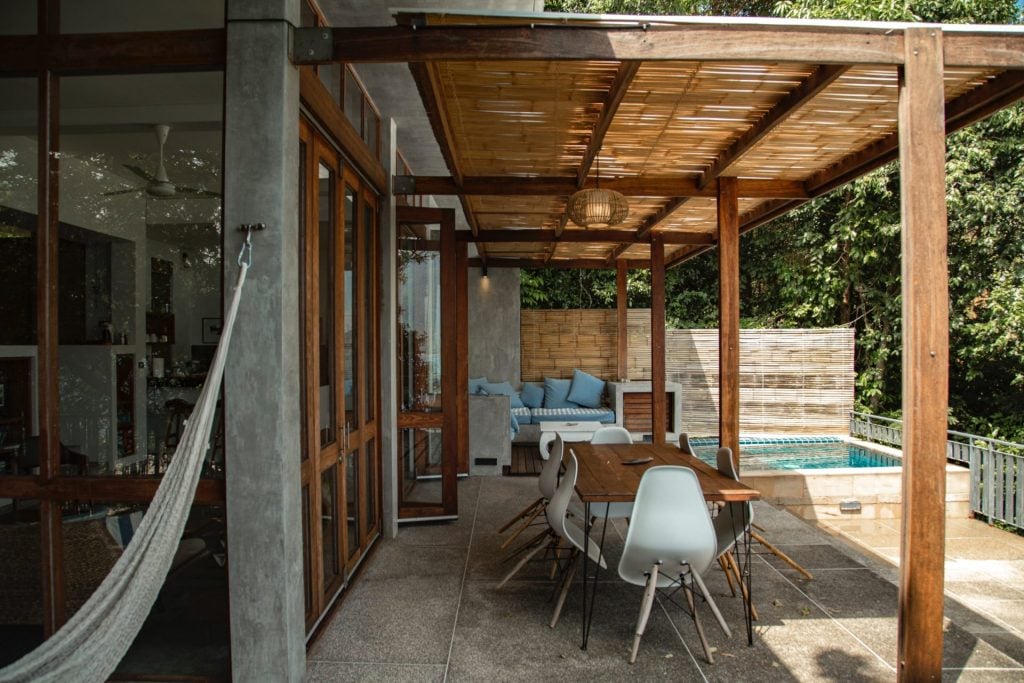
Aside from its foreign influences, Spanish architecture is heavily reflective of the values and beliefs from certain eras. In Spain, there are castles and coliseums that were built to speak of political power. Along the way, it evolved to cater to the trends in society.
Because of these many influences, there are similarities to the distinct style components of Spanish architecture especially with neighboring countries. Some of the associated styles are Colonial Revival, Mission Revival, Moorish Revival, and many others. Although, there are certain characteristics of Spanish-style homes that make them appealing even up to this day.
Characteristics of Spanish-Style Homes
When it comes to the Spanish-style home, the structure is somehow identifiable. Spanish houses are known for their uniformity, minimal embellishments, and smooth exterior finishes using adobe, stone, or stucco. The arched doors, entryways, and windows are also some of the distinct characteristics of Spanish-inspired houses, along with a heavy wooden doors that is carved and has some metal work.
Spanish-inspired houses usually have tile and stone roofs that have warm earth tones. On top of the house’s structure, it is common for a Spanish-style home to include an outdoor space for interior courtyard, probably with some water features, colorful tile accents, wrought ironwork, or niches. Some also use cobbled floors, exposed wood beams and tile, or stone as its main components.
To add the rustic feel, natural wood accents are integrated into the elements of the outdoor design. There are a number of elements that can use wood for such as furniture, flower boxes, or cabana beams. For those with an outdoor space, decorative sculptures and other ceramic details are included close to water features to give the classic, elegant style that completes the breathtaking, earthy color palette.
Advantages of Spanish-Inspired Designs
Practicality
The materials usually used for Spanish-style homes are known to hold up well to the house’s structure and not prone for maintenance and repair needs. Value for money should be on the top of the list when it comes to homeownership.
The interior elements used in Spanish-style homes are also practical since they are easy to clean and conducive for warm weather, to help save in the utility bills.
Versatility
Since there is a wide range and intensity of Spanish inspiration that an aspiring homeowner can choose to incorporate, it can easily complement one’s design taste. Spanish-style homes can have minimal to intricately ornate design, and it is easily paired with elements to decorate its interior according to one’s preferences.
Outdoor Space
Spanish-style homes can be described as classy, luxurious, and elegant because of a presence of outdoor space. It is an integral part of Spanish architecture to provide areas for recreation and relaxation such as interior courtyards, balconies, and central so people can have the opportunity to enjoy the outdoors.
These outdoor spaces are usually adorned with water features, beautiful gardens, interesting outdoor furniture, and tile accents that create the perfect area for homeowners to enjoy nature, breathe fresh air, and bask in some sunshine.
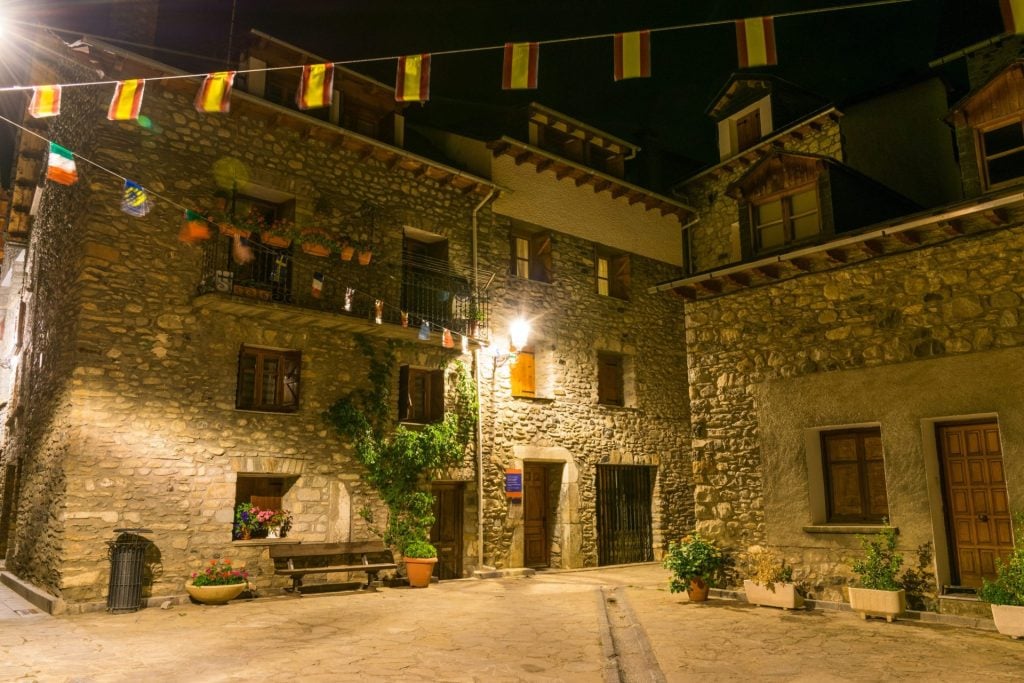
Spanish-Inspired Outdoor Space
What makes a Spanish-inspired outdoor space? There is one word for it: Oasis. The outdoor spaces in Spain and its other influences have something in common, a water feature that is located in the center of the area. This element is where all the other elements gravitates towards.
In a country like Philippines, with its crazy hot days most days of the year, a water feature will help to create a cool and refreshing atmosphere to the residents in the area. Creating an oasis-like theme in the outdoor space is not entirely for aesthetic purposes, but it is also functional.
Like one of the principles in Spanish architecture, many luxury real estate developments make sure that homeowners will have an outdoor space where they can have a time of recreation and relaxation. This translates to amenities such as swimming pools, garden and parks, clubhouse pavilions, and many more. These amenities help people live a well-rounded lifestyle without taking the extra mile and non-sustainable means.
When it comes to aesthetic purposes, sculptures are being incorporated by the designers and developers to give homage to the art form that are usually seen in Spanish, Italian, and other classic styles of architecture. It completes the elegance and luxury that homeowners deserve to experience everyday.
Live Artfully In A Spanish Inspired Outdoor Space with Brittany Corporation
Spain is a long way from the Philippines. People spend a fortune to visit this country and personally appreciate the stunning architectural sites that are famous all over the world. It is really a dream for many enthusiasts and travelers alike. But do you know that you can live each day in a Spanish-inspired estate without flying to Spain?
Brittany Corporation, one of the developers in the Philippines specializing in luxury real estate, offers Brittany Santa Rosa. This development located in the heart of Laguna has plenty of outdoor space brimming with Spanish influences. It has a grand fountain which leads residents to the clubhouse, and secret garden nearby.
On top of these features, Brittany Santa Rosa is the place where families can thrive and experience a lush atmosphere in the middle of the beauty of nature up close. It is also located at this educational and commercial hub of Laguna. Get your own luxury home in Vista Alabang by visiting Brittany’s social media pages!
Suggested Read: Traditional Spanish Decor: Tips For Achieving A Classic Look
Suggested Read: Elevate Your Lifestyle: Living in A Spanish-Inspired Home
Suggested Read: A Guide For Creating A Modern Spanish-Inspired Oasis
Suggested Read: Colors Of A Rustic Spanish Style Home
Suggested Read: Bringing The Colors Of Spain
Tagaytay is the perfect destination to enjoy a summer adventure! Here are 16 outdoor activities and attractions that await you in Tagaytay.
Are you looking for a fantastic summer experience only a few hours away from Metro Manila? Look no further than Tagaytay, a popular destination known for its beautiful landscape, mild temperature, and enjoyable outdoor activities in Tagaytay. The Tagaytay tourist spots have much to offer to everyone searching for the best things to do for a thrilling and unique experience, from hiking and horseback riding to ziplining and paragliding.
Tagaytay has something for everyone, whether you’re an adrenaline fanatic searching for memorable experiences or simply looking for a pleasant and relaxed time with family and friends. So pack your bags, put on your adventure hat, and prepare to enjoy the finest of Tagaytay this summer!
Without further ado, here are the top things to do in Tagaytay City! If you have a property in Crosswinds Tagaytay, even better for you to enjoy these activities.
Top 16 Activities To Do at Tagaytay
Outdoor Activities in Tagaytay #1: Take a trip to the Taal Volcano
The Taal Volcano is often ranked as one of the top attractions for visitors visiting Tagaytay. You may get to the volcanic island by taking a boat trip, and then you can hike up to the crater to get a breathtaking perspective of Taal Lake. Even someone with little or no hiking experience should be able to complete this trail, as the reward at the summit is well worth the effort.
Outdoor Activities in Tagaytay #2: Riding Horses Is Fun To Do
Another well-liked pastime in Tagaytay is going horseback riding across the countryside. You may ride horseback in the beautiful city while enjoying the fresh air and sights. The neighborhood is home to several stables that provide services related to horseback riding, and the prices charged by these stables are often affordable.

Outdoor Activities in Tagaytay #3: Participate in an Exciting Zipline Tour!
Ziplining is one of the activities that every adrenaline rush should attempt at least once. Several Tagaytay’s parks have zip lines, each providing a unique and exhilarating experience. From a bird’s perspective, you can soar above the trees and see the verdant landscape. If you already have a property in Crosswinds Tagaytay, ziplining will even be more fun for you!
Outdoor Activities in Tagaytay #4: Experience Scuba Diving
Scuba diving is the ideal pastime for anyone who is searching for an experience that is a bit more thrilling and dangerous. The Aquaventure Reef Club, which is situated only a few minutes inland from the water’s edge, is recognized as being among the most well-liked diving spots in the Tagaytay area.
This dive location is home to many coral species, each contributing to the site’s brilliant and colorful atmosphere, as the location’s name implies. Divers have a good chance of seeing a variety of species at the Aquaventure Reef Club, including groupers, snappers, and surgeonfish, all of which are pretty easy to locate.
Outdoor Activities in Tagaytay #5: Attempt Parasailing on Taal Lake
Parasailing is another popular pastime in Tagaytay. You will get a great glimpse of the mountains in the area as you soar far over Taal Lake. It is a unique opportunity to enjoy Tagaytay’s splendor from a vantage point distinct from the norm. If you already have a luxury condo in Tagaytay, parasailing on Taal Lake will even be more fun for you!
Outdoor Activities in Tagaytay #6: Discover the Nurture Wellness Village
Visit the Nurture Wellness Village if you’re searching for something less stimulating to do in your spare time. It is a spa and wellness facility that provides a variety of treatments and activities to its clients, such as culinary lessons, yoga, and meditation. You may also take advantage of the lovely gardens and hiking trails in the vicinity.
Outdoor Activities in Tagaytay #7: Have a Picnic in the Picnic Grove
The Tagaytay Picnic Grove is a favorite place to go on outings by families and large parties. You may spend a day unwinding and resting at the park by renting a cabin or bringing your picnic blanket. The region can also enjoy several activities, including cable car riding, horseback riding, and ziplining.
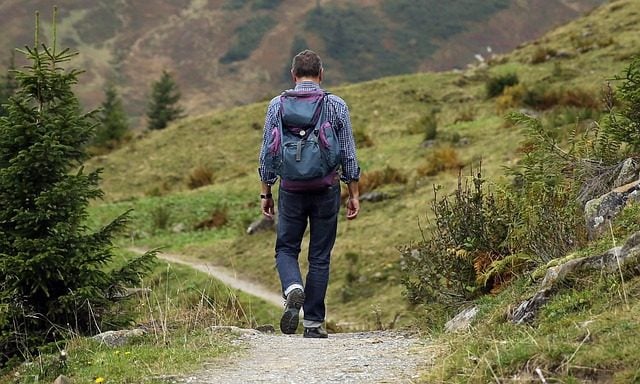
Outdoor Activities in Tagaytay #8: Take a Trip on the Cable Car!
In addition, Picnic Grove allows guests to take a ride on a cable car that provides a tour of the surrounding region. You will get a breathtaking view of Taal Lake and the surrounding mountains when you are in the air.
Outdoor Activities in Tagaytay #9: Consider going on the Tagaytay Ridge Tour
The Tagaytay Ridge Tour is a guided trip that features a picturesque drive up the ridge. The excursion begins in Tagaytay and ends in Tagaytay. You will get the opportunity to learn about the region’s history and culture while taking in the breathtaking scenery of Taal Lake and the mountains surrounding it.
Outdoor Activities in Tagaytay #10: Pay a visit to the Puzzle Mansion
A jigsaw puzzle collection may be displayed in the museum called “The Puzzle Mansion.” There are few places like it, so you should visit it. You will be able to view the greatest puzzle collection in the world and even give some of the riddles a shot at solving them on your own. If you already have a luxury condo in Tagaytay or are planning to invest in one, this puzzle mansion will be an unforgettable experience.
Outdoor Activities in Tagaytay #11: Enjoy a Spa Day
Spas and wellness centers may be found in abundance in the city of Tagaytay. These establishments provide various services, such as facials, body wraps, and massages. In addition, guests may indulge in a day filled with restorative spa treatments in well-known locations such as Nurture Wellness Village and The Farm at San Benito.
Outdoor Activities in Tagaytay #12: Go on a Walk at Tagaytay Highlands
It is common for people to go hiking and participate in other types of outdoor activities in the Tagaytay Highlands. The resort features several hiking paths, one of which is a picturesque route that leads to the Tagaytay Highlands golf course.
Outdoor Activities in Tagaytay #13: Pay a visit to the Orlina Museum
The works of Ramon Orlina, an internationally known glass sculptor, are shown in the Museo Orlina, an art museum. You will be able to learn about the history of glass art in the Philippines while taking in the many different glass artworks on show. If you already have a property in Crosswinds Tagaytay, the Orlina Museum will even be more insightful for you!
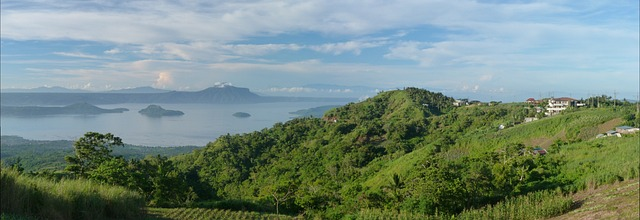
Outdoor Activities in Tagaytay #14: Take a Hike Through the Woods
Because of its verdant setting, Tagaytay is an excellent location for hiking through the great outdoors. You can stroll in the tranquil surroundings of nature by going to the Tagaytay Highlands or the Nurture Wellness Village.
Outdoor Activities in Tagaytay #15: Take a trip up to the People’s Park in the Sky
The remnants of an unfinished house have been used to construct a historical park known as the People’s Park in the Sky. It provides a breathtaking perspective of Taal Lake as well as the landscape that is all around it. Picnicking and gaining knowledge about Tagaytay’s past are both enjoyable activities that can be done at this location.
Outdoor Activities in Tagaytay #16: Have a Culinary Adventure
Tagaytay has a thriving restaurant culture, and a wide variety of dining options are available to visitors. You shouldn’t leave without sampling the renowned bulalo, tawilis, and other regional specialties. Some of the most well-known restaurants in the area are Antonio’s and The Bag of Beans.
Tips When Visiting Tagaytay, Philippines
Plan your trip ahead of time
Ensure that your schedule is well organized before heading to Tagaytay by doing so in advance. Make a mental note of the locations you want to see, the things you want to do, and the restaurants you want to sample while you’re on your trip. Doing this lets you make the most of your time and stay calm under pressure. You could even stay in your property in Crosswinds Tagaytay to make things more convenient.
Dress in a comfortable manner
Because of Tagaytay’s milder weather compared to the rest of the Philippines, it is essential to carry suitable attire. Put on comfortable clothes and shoes because it’s possible that you’ll be doing a lot of walking while you’re touring.
Be mindful of the weather
Because of the unpredictability of Tagaytay’s climate, verifying the latest weather prediction before departing is important. Also, carry along the accessories and garments suitable for the many types of weather, such as umbrellas and raincoats.
Book your accommodation in advance
If you intend to spend the night in Tagaytay, you should secure your lodging well in advance. Because there is a large selection of hotels, resorts, and Airbnb listings in Tagaytay, you must pick the most appropriate for your needs and finances.
It is important to respect the local culture and traditions
It is crucial to respect Tagaytay’s local culture and customs, just as it is necessary to do so everywhere you travel. Always be aware of what you are doing and how you behave, and ensure you have permission before photographing people or places.
Suggested Read: Luxurious Summer Living At Alpine Villas In Crosswinds Tagaytay
Suggested Read: Unwind And Relax: Summer Activities In Tagaytay
Suggested Read: A luxurious Vacation Destination In Tagaytay
Suggested Read: Cognitive Benefits Of Playing Puzzle Games
Suggested Read: Luxury Living In Tagaytay
Creating a Spanish oasis in your home doesn’t have to be difficult. Learn how to bring the modern Spanish style into your home with these tips and tricks!
Are you looking for ways to turn your home into an oasis of modern Spanish style? Whether you’re starting from scratch or simply want to give your existing interior a touch of the Mediterranean, this guide will help you create a warm and inviting atmosphere that will surely be the envy of all who visit. Through careful decor selection, color choices and other design elements, we’ll show you how to craft the perfect interior design for your luxury house and lot in Sta. Rosa for relaxation and entertainment.
1. Choose a Color Palette
When creating a Spanish-inspired look built in your home, one of the most important steps is choosing colors that evoke the warm and inviting tones of the Mediterranean. This can be done through earthy shades like tans, deep reds, oranges and greens, and bright and bold colors like yellows and blues. The combination should provide a stunning visual effect that instantly transports you to another place.
When selecting a color palette for your space in Brittany Santa Rosa, it is important to consider the mood you want to create. For example, if you are going for a more traditional look, opt for cooler tones like blues and greens to give off a calming atmosphere. If you’re aiming to achieve a modern take on Spanish style, incorporate bright and vibrant colors. Consider adding pale and muted shades to give the space a light and airy feel, or add some deep reds or oranges for an exotic and dramatic look.
You can also use accent pieces in bolder hues to draw attention to certain areas of your design. For example, if a feature wall is painted in a deep red, add accessories such as throw pillows or artwork with bright oranges, yellows or blues to create a visual contrast. Combining different tones and textures can help instantly transform any space into a cozy spot for relaxation.
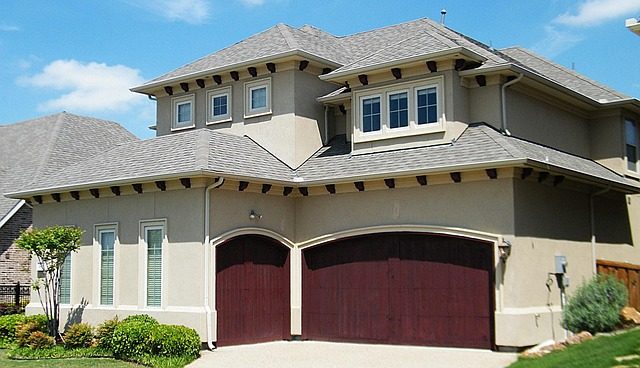
2. Incorporate Natural Elements
In order to create an authentic Spanish atmosphere in your luxury house and lot in Laguna, it’s important to incorporate natural elements wherever possible. This could include furniture made from natural materials like rattan or bamboo, textured rugs, and wall hangings featuring patterns inspired by nature, or even plants around the room that give off soothing energy. Not only do these items bring life into the space, but they also recall the traditional Spanish aesthetic.
3. Select Bold Furniture Pieces
When furnishing a Spanish-inspired oasis, selecting striking and comfortable pieces is important. Look for items made with dark wood frames and bright-colored cushions or hand-crafted furniture featuring intricate designs and details. If possible, choose large pieces that create an impactful presence in the room without feeling overwhelming or cluttered.
Consider adding statement-making pieces like a sofa with curved, carved arms and tufted details or a bright armchair that draws the eye. Incorporating bold furniture pieces will help create an inviting atmosphere and bring your Spanish-inspired vision to life.
4. Utilize Unique Accents
Add unique accents throughout your Spanish-inspired luxury house and lot in Sta. Rosa for added texture and visual interest. This could include anything from sculptures depicting classical art to paintings of rolling hillsides and vibrant landscapes. Whatever you decide to use, make sure it speaks to the theme of your space and adds a personal touch to the area.
Smaller accents and decorations such as potted plants, throws, and cushion covers can also help give your space an authentic Spanish touch. Consider getting creative with color combinations and patterns that you wouldn’t normally expect to find in a traditional home—bold colors are often used in Latin American decor to capture the vibrancy of the culture.
5. Add Lighting Fixtures
Lighting can be powerful when crafting an atmosphere, so use it effectively in your Spanish-inspired oasis. Aim to create layers of lighting throughout the room by combining overhead fixtures with accent pieces such as wall sconces or table lamps. This will give the area a soft yet inviting glow, perfect for entertaining guests or relaxing after a long day.
6. Incorporate Textiles
Textiles are another great way to bring warmth and color into any space, especially one with Spanish flair. Whether you opt for curtains, throws or decorative pillows, choose fabrics that feature subtle patterns or bold prints to add visual interest. Don’t be afraid to mix and match different textures as well, such as velvet and linen or cotton and silk.
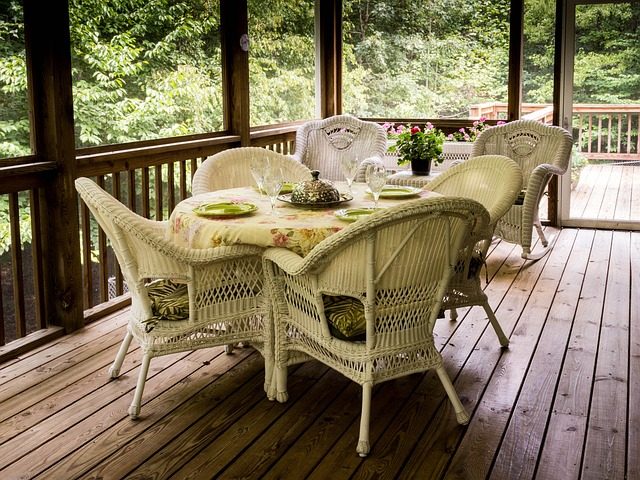
7. Hang Artwork
A room isn’t complete without artwork! Incorporating pieces that feature Spanish motifs can instantly evoke a sense of the Mediterranean in any space. Look for paintings featuring scenes from classical Spain or abstract works with vibrant colors, then hang them on the walls to create an eye-catching focal point.
If you want to make more of a statement, consider installing wooden beams on the ceiling. This type of structure is common in traditional Spanish homes, and it can give your room a unique look. Hang various art pieces from the beams for a rustic yet elegant style. Finally, don’t forget to add plenty of decorative accents like sculptures and figurines. Look for pieces that reflect Spain’s rich culture or feature flamboyant colors to bring your room to life. With a few simple touches, you can create a space that perfectly captures the beauty of Spanish design.
8. Include Textured Rugs
When decorating with rugs in your space in Brittany Santa Rosa, consider ones with a textured weave or patterned design that will look stunning against your chosen color palette. Natural fibers like jute or sisal make great choices, as they bring a touch of rustic charm to any space. The warm hues will also add an inviting vibe to your Spanish-inspired oasis.
When selecting a rug for your Spanish-inspired oasis, you may also want to consider one with some interesting shapes and textures. Look for geometric patterns or floral designs, as these will bring a sense of sophistication to the room. If you’re going for a more traditional look, opt for classic wool rugs in shades like red or mustard yellow to evoke a cozy atmosphere. Try combining several rugs of varying sizes and textures for something completely unique for an eclectic style that will surely draw attention.
9. Pick the Perfect Accessories
Finally, it’s time to complete the look with some unique accessories that reflect the theme of your room. Think about including terracotta vases, glass candle holders and ceramic figurines for a truly authentic feel. Or you could go for more contemporary pieces in bold colors to give the area a modern twist without sacrificing its traditional appeal.
When it comes to picking accessories, the possibilities are endless. If you want to add a touch of color to your space, consider purchasing some decorative pillows or a cozy throw blanket in an eye-catching hue. Or you could try hanging wall art that speaks to your style and decorating aesthetic. Showcase framed photographs of family members or travel destinations for a personal touch, or pick out prints matching your room’s colors and patterns.
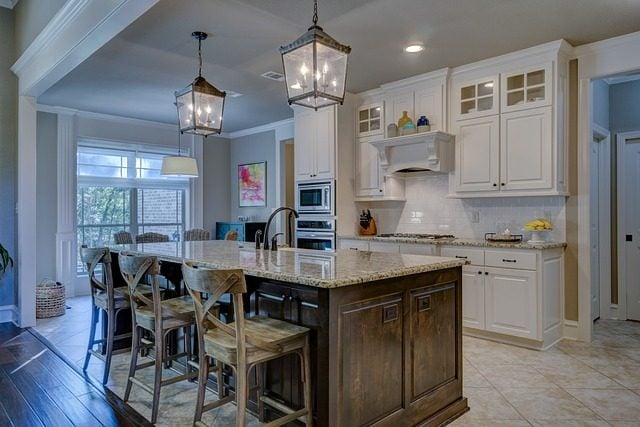
10. Enjoy Your Oasis
Now that you’ve created your very own modern Spanish-inspired oasis, it’s time to enjoy the atmosphere and make the most of your luxury house and lot in Laguna. Invite friends over for dinner or simply curl up with a good book; your new home is ready to bring you relaxation and joy! With vibrant colors, lush foliage, and a beautiful rustic design, your Mediterranean paradise awaits. Make the most of your oasis and let it bring you relaxation, rejuvenation, and peace!
Final Thoughts
Creating a beautiful modern Spanish-inspired oasis in your home doesn’t have to be difficult. By carefully selecting colors, furniture, accents and accessories that reflect the traditional Mediterranean style, you can easily craft an inviting sanctuary perfect for entertaining or relaxing after a long day. Ultimately, by following these tips and embracing the beauty of Spain, you can transform any room into an oasis of peace and tranquility.
Suggested Read: How To Incorporate Spanish Design Elements Into Your Home
Suggested Read: Traditional Spanish Decor: Tips For Achieving A Classic Look
Suggested Read: Elevate Your Lifestyle: Living In A Spanish-Inspired Home
Suggested Read: Experience Bliss: Live In Style At Bern Baguio
Suggested Read: Bringing The Colors Of Spain

